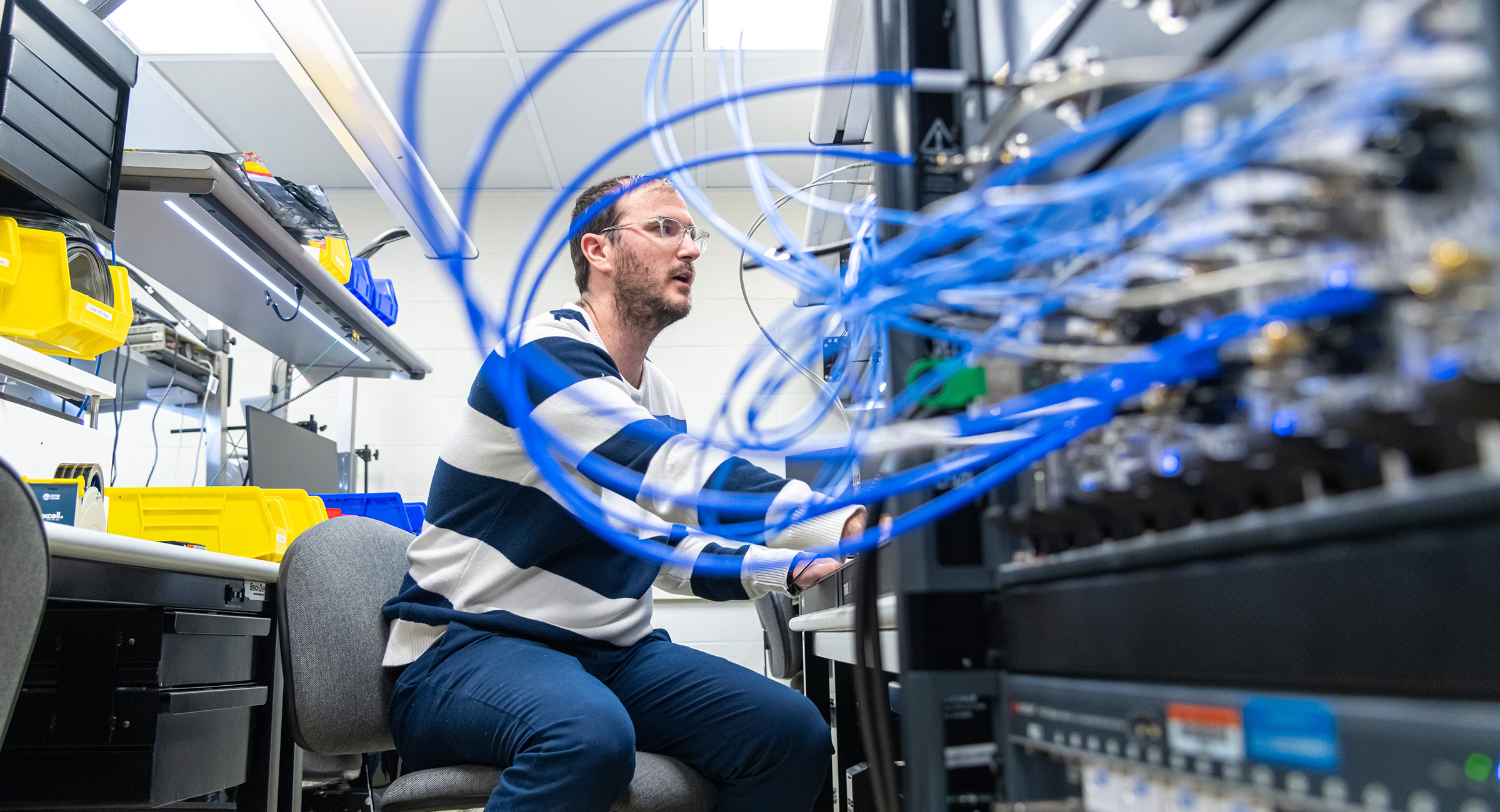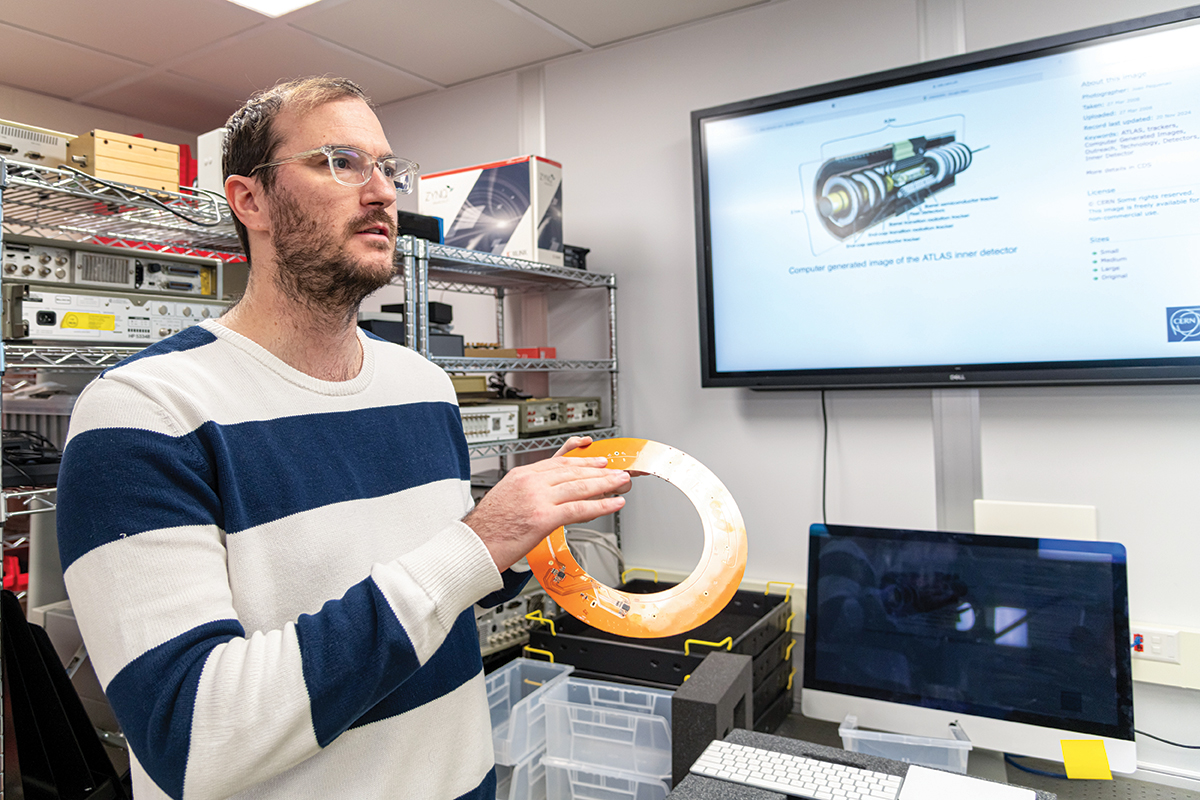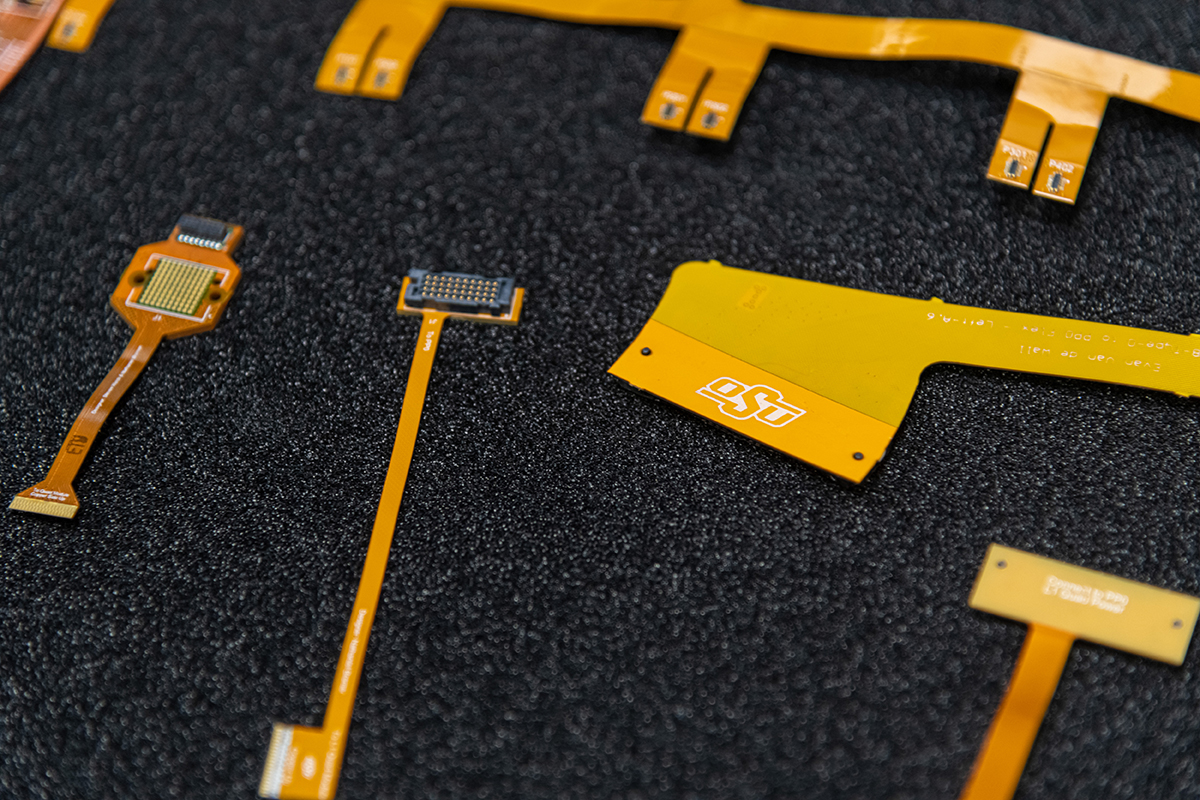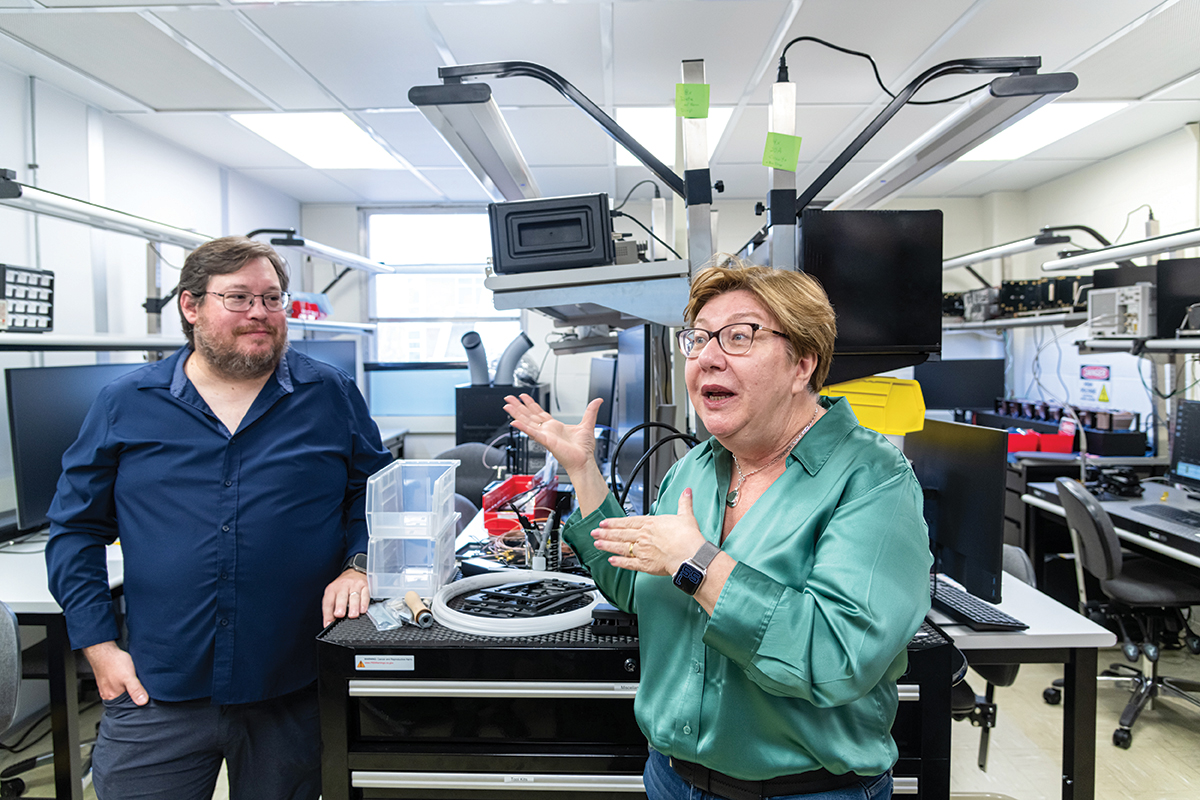
OSU works to upgrade renowned CERN particle detector
Friday, August 22, 2025
Media Contact: Elizabeth Gosney | CAS Marketing and Communications Manager | 405-744-7497 | egosney@okstate.edu
In a laboratory deep below the Swiss-French border, the world’s most powerful particle accelerator smashes protons together at nearly the speed of light.
A piece of Oklahoma State University sits at the heart of the action.
“Space is infinite, but we’re dealing with millimeters” is how one OSU researcher described their work on components for CERN’s ATLAS detector, but even that understates the precision involved. The copper traces they design are 75 micrometers wide: about the same thickness as a piece of paper.
For 20 years, faculty and students from OSU’s College of Arts and Sciences have contributed to ATLAS, a major particle physics experiment on the Large Hadron Collider at the Conseil Européen pour la Recherche Nucléaire (European Organization for Nuclear Research).
A Toroidal LHC Apparatus (ATLAS) is one of the largest detectors of its kind. It captures data from high-energy particle collisions and was instrumental in the 2012 discovery of the Higgs boson, which is a particle that helps explain why other particles have mass. ATLAS is now undergoing an upgrade, and OSU researchers are playing a role in developing components for installation during the next maintenance period.
“Without what we’re doing at OSU, it will not be done,” said Dr. Evan Van de Wall, an OSU assistant research engineer. “The current technology that’s in there is too irradiated to continue to work. Without OSU’s contribution, the future of high energy physics doesn’t happen.”
The OSU laboratory responsible for this work was established two decades ago by Dr. Flera Rizatdinova, the current head of the physics department. What began as a small operation has grown into a research group with three professors, five engineers, multiple graduate and undergraduate students and two postdoctoral fellows.
“It’s a melting pot of many disciplines,” said Steven Welch, a senior research engineer who leads the lab.
The team includes students and professionals from physics, computer science, electrical engineering, computer engineering, mathematics, material science and more.
Dr. Joseph Haley, professor in the Department of Physics, said having students working on the project is paramount to their career progress.
“Working on the ATLAS experiment is a transformative experience for our students. They gain hands-on experience with advanced technology and contribute to fundamental science, preparing them for future careers in research and engineering,” Haley said. “It’s worth noting that the research we conduct here at OSU is exactly the same as that at prestigious institutions like Yale and Stanford, and we actively collaborate with these groups, giving our students unparalleled opportunities in the field of high-energy physics.”
This interdisciplinary approach is necessary due to the project’s complexity. OSU’s team is developing components for the inner tracker of the ATLAS detector, specifically layers zero and one, which are closest to the collision point.
“Our boards receive the most radiation and will receive the most data transmitted through them,” Van de Wall said. “If our boards don’t work, the detector doesn’t work.”
The engineers design flexible cables that link a detector’s sensors to its data system. The parts must meet extremely exact standards, with measurements accurate to just a few micrometers.
“I like to tell people that it takes three revisions to make something work correctly,” Welch said. “You build it once, and it doesn’t work. Then you build it again, and it doesn’t work. And then, by the third time, you can actually make it work.”
The stakes are high. Any mistakes could be catastrophic. Once installed, these components must function flawlessly for at least a decade, as accessing them for repairs would require disassembling the massive ATLAS detector for nearly a year.
The ATLAS collaboration involves approximately 5,000 people from around 40 countries. About 3,500 scientists appear as authors on research papers, with another 1,500 engineers providing support.



Rizatdinova finds the most pride in her team, whom she says all work extremely hard and have been quick to learn and grow.
“I’m proud of this project,” Rizatdinova said. “I’m very proud of my engineering team, and I’m grateful to all of the engineers involved in the project.”
The lab has developed such a strong reputation that national laboratories now send
their equipment to OSU for testing.
“We have leading equipment, and that’s not a hyperbole,” Van de Wall said. “We have
a lab with the highest-end technology to test and design things.”
For students involved in the project, the experience is transformative. They get hands-on experience with cutting- edge technology while contributing to fundamental science.
“Every piece that we make, you put your name on it,” Van de Wall said. “These students are extremely excited to have their name on components that go into the leading edge of high-energy physics.”
The project also teaches resilience.
“Don’t be afraid to break things,” Van de Wall said. “We always joke that if you’re not breaking things, you’re not actually working. Everybody who’s been on the project has broken something.”
The ongoing work at OSU is scheduled to continue until 2027, with installation planned for CERN in 2028. The upgraded ATLAS detector will help scientists explore questions about the universe, potentially leading to the discovery of new particles and improving our understanding of dark matter and the Higgs boson.
As Welch puts it, the particle accelerator is “E=mc2 in real life,” converting energy from high-speed particles into new forms of matter that have never been seen before.
Rizatdinova summarized the collaborative spirit that makes science like this possible.
“We are collaborative by nature,” she said. “If we aren’t collaborative, we won’t survive.”
Story By: Mak Vandruff | Photos By: Jason Wallace | casnews@okstate.edu
